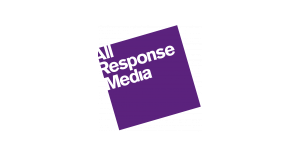Earlier this month, Sky launched a new app specifically aimed at kids aged 3 to 9, cleverly named the Sky Kids App. Free to Sky customers, it offers a fun and safe way for pre-schoolers to nine year olds to enjoy a huge host of programming, not just from the Sky Media family. For example, as well as Nick Jr.’s Paw Patrol, it will also bring in content from Turner and BBC with programmes such as Boomerang’s Scooby Doo, Cartoon Network’s Adventure Time and CBeebies’ Octonauts.
Sky will also be commissioning its own exclusive and original kids content for the app which won’t be available on linear TV. Currently one of the stars in their line-up, in partnership with Oscar-winning Aardman Animation, is childhood favourite of yesteryear, Morph, which will be homed on the app.
In addition to programmes, the app will also feature engaging content such as games, interactive play ideas and will be a totally secure environment with the opportunity for parents and children to create age appropriate profiles and a sleep mode that will allow parents to easily limit the amount of device time kids have.
All Response Media Viewpoint
The app could be seen as a revelation for parents of young children as they are guaranteed a safe and controlled environment for their youngsters to watch and interact with content that they know is age appropriate. However, for advertisers this poses several questions. For example, will this move drive incremental usage outside of linear TV or viewing directly to the app only? And could prices be affected by this change?
There are some important considerations in answering these questions:
- Demand for children’s stations remains strong with around 12 channels dedicated solely to kids’ airtime and over 15 children’s brands such as Mattel, Hasbro and Lego all active (these include at least 3-4 different product lines in any given month).
- For those outside of kids’ products/services, we know that this select group of channels offers a unique opportunity within linear TV to reach a secondary audience; which, despite the programming actually tends to be more responsive to things like travel brands, lifestyle products and even home shopping or financial services.
- Most importantly, currently the Sky Kids App has no commercial offering. So once viewers move away from their TVs to the app, impacts could drop. Whilst generally we have seen that duel screening has been on the up in the market, for our younger audiences this is not the case, with very little distinction seen between TV time and tablet/phone time for parents – which is continuing to put pressure on the linear TV offering.
For kids’ products/services advertisers, there is hope that the app will become commercial at a later stage, which would give those advertisers an extra layer of opportunity to add to the already wide Sky offering; Sky linear, Sky Go, Sky Anytime and Sky AdSmart to name a few. However, other advertisers may find that inside the linear space there is a possible ceiling of available inventory on these stations, which historically delivered both cost effective reach via the secondary audiences, and the right environment for response. That said, similar to the kids’ advertisers, this may open up opportunities for additional targeting opportunities outside of the TV set if the price is right!
Finally, the idea that the app is not yet commercial begs the question…why? Potentially there is a view from Sky to look at alternatives to just paid advertising, and increase retention. These types of added extras make these bundles that Sky customers pay extra for on a monthly basis (c.£12 p/month vs. original package) even more valuable and sticky, thus minimising the desire to switch packages or providers.
The Sky Kids App is the latest addition to the Over The Top (OTT) content providers whereby viewers can consume their desired media outside of linear TV over the internet – such as Netflix, Hulu and Amazon Prime. Whilst the app offers a great viewer experience with no paid-for advertising and right-fit content of the younger audiences, it does give advertisers another challenge in bridging the gap in accurate audience measurement outside of traditional linear media.


